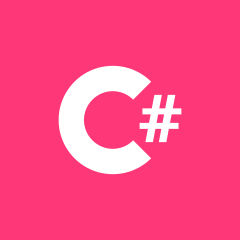通过ASP.NET Core中的控制器操作运行后台任务
我正在使用带有ASP.NET Core 2.0的C#的REST API开发Web应用程序。
我要实现的是,当客户端向端点发送请求时,我将运行与客户端请求上下文分离的后台任务,如果任务成功启动,该任务将结束。
我知道有HostedService问题,但是问题是HostedService服务器启动时启动,据我所知,没有办法HostedService从控制器手动启动。
这是一个演示该问题的简单代码。
[Authorize(AuthenticationSchemes = "UsersScheme")]
public class UsersController : Controller
{
[HttpPost]
public async Task<JsonResult> StartJob([FromForm] string UserId, [FromServices] IBackgroundJobService backgroundService)
{
// check user account
(bool isStarted, string data) result = backgroundService.Start();
return JsonResult(result);
}
}
 慕沐林林
慕沐林林浏览 348回答 3
3回答
-

千巷猫影
您仍然可以结合使用IHostedService作为后台任务的基础BlockingCollection。为创建包装器,BlockingCollection以便将其作为单例注入。public class TasksToRun{ private readonly BlockingCollection<TaskSettings> _tasks; public TasksToRun() => _tasks = new BlockingCollection<TaskSettings>(); public void Enqueue(TaskSettings settings) => _tasks.Add(settings); public TaskSettings Dequeue(CancellationToken token) => _tasks.Take(token);}然后在执行IHostedService“监听”任务时以及任务“到达”时执行它。BlockingCollection如果collection为空,将停止执行-因此您的while循环不会消耗处理器时间。.Take方法接受cancellationToken作为参数。使用令牌,可以在应用程序停止时取消“等待”下一个任务。public class BackgroundService : IHostedService{ private readonly TasksToRun _tasks; private CancellationTokenSource _tokenSource; private Task _currentTask; public BackgroundService(TasksToRun tasks) => _tasks = tasks; public async Task StartAsync(CancellationToken cancellationToken) { _tokenSource = CancellationTokenSource.CreateLinkedTokenSource(cancellationToken); while (cancellationToken.IsCancellationRequested == false) { try { var taskToRun = _tasks.Dequeue(_tokenSource.Token); // We need to save executable task, // so we can gratefully wait for it's completion in Stop method _currentTask = ExecuteTask(taskToRun); await _currentTask; } catch (OperationCanceledException) { // execution cancelled } } } public async Task StopAsync(CancellationToken cancellationToken) { _tokenSource.Cancel(); // cancel "waiting" for task in blocking collection if (_currentTask == null) return; // wait when _currentTask is complete await Task.WhenAny(_currentTask, Task.Delay(-1, cancellationToken)); }}在控制器中,您只需将要运行的任务添加到我们的集合中public class JobController : Controller{ private readonly TasksToRun _tasks; public JobController(TasksToRun tasks) => _tasks = tasks; public IActionResult PostJob() { var settings = CreateTaskSettings(); _tasks.Enqueue(settings); return Ok(); }}用于阻塞收集的包装程序应注册为依赖项注入,以单例方式进行services.AddSingleton<TasksToRun, TasksToRun>();注册后台服务services.AddHostedService<BackgroundService>(); -

慕森王
我认为,在某些时候链接断开的情况下,可以在这里重申整个示例。我做了一些调整。最值得注意的是,我注入IServiceScopeFactory,以允许后台进程自己安全地请求服务。我会在此答案的末尾解释我的推理。核心思想是创建一个任务队列,用户可以将其注入到控制器中,然后将任务分配给该任务队列。长期运行的托管服务中存在相同的任务队列,该服务一次使一个任务出队并执行该任务。任务队列:public interface IBackgroundTaskQueue{ // Enqueues the given task. void EnqueueTask(Func<IServiceScopeFactory, CancellationToken, Task> task); // Dequeues and returns one task. This method blocks until a task becomes available. Task<Func<IServiceScopeFactory, CancellationToken, Task>> DequeueAsync(CancellationToken cancellationToken);}public class BackgroundTaskQueue : IBackgroundTaskQueue{ private readonly ConcurrentQueue<Func<IServiceScopeFactory, CancellationToken, Task>> _items = new(); // Holds the current count of tasks in the queue. private readonly SemaphoreSlim _signal = new SemaphoreSlim(0); public void EnqueueTask(Func<IServiceScopeFactory, CancellationToken, Task> task) { if(task == null) throw new ArgumentNullException(nameof(task)); _items.Enqueue(task); _signal.Release(); } public async Task<Func<IServiceScopeFactory, CancellationToken, Task>> DequeueAsync(CancellationToken cancellationToken) { // Wait for task to become available await _signal.WaitAsync(cancellationToken); _items.TryDequeue(out var task); return task; }}在任务队列的核心,我们有一个线程安全的ConcurrentQueue<>。由于在新任务可用之前我们不想轮询队列,因此我们使用一个SemaphoreSlim对象来跟踪队列中当前的任务数。每次调用时Release,内部计数器都会递增。该WaitAsync方法将阻塞,直到内部计数器大于0,然后再将其递减。为了使任务出队和执行任务,我们创建了一个后台服务:public class BackgroundQueueHostedService : BackgroundService{ private readonly IBackgroundTaskQueue _taskQueue; private readonly IServiceScopeFactory _serviceScopeFactory; private readonly ILogger<BackgroundQueueHostedService> _logger; public BackgroundQueueHostedService(IBackgroundTaskQueue taskQueue, IServiceScopeFactory serviceScopeFactory, ILogger<BackgroundQueueHostedService> logger) { _taskQueue = taskQueue ?? throw new ArgumentNullException(nameof(taskQueue)); _serviceScopeFactory = serviceScopeFactory ?? throw new ArgumentNullException(nameof(serviceScopeFactory)); _logger = logger ?? throw new ArgumentNullException(nameof(logger)); } protected override async Task ExecuteAsync(CancellationToken stoppingToken) { // Dequeue and execute tasks until the application is stopped while(!stoppingToken.IsCancellationRequested) { // Get next task // This blocks until a task becomes available var task = await _taskQueue.DequeueAsync(stoppingToken); try { // Run task await task(_serviceScopeFactory, stoppingToken); } catch(Exception ex) { _logger.LogError(ex, "An error occured during execution of a background task"); } } }}最后,我们需要使任务队列可用于依赖项注入,并启动我们的后台服务:public void ConfigureServices(IServiceCollection services){ // ... services.AddSingleton<IBackgroundTaskQueue, BackgroundTaskQueue>(); services.AddHostedService<BackgroundQueueHostedService>(); // ...}现在,我们可以将后台任务队列注入控制器并排队任务:public class ExampleController : Controller{ private readonly IBackgroundTaskQueue _backgroundTaskQueue; public ExampleController(IBackgroundTaskQueue backgroundTaskQueue) { _backgroundTaskQueue = backgroundTaskQueue ?? throw new ArgumentNullException(nameof(backgroundTaskQueue)); } public IActionResult Index() { _backgroundTaskQueue.EnqueueTask(async (serviceScopeFactory, cancellationToken) => { // Get services using var scope = serviceScopeFactory.CreateScope(); var myService = scope.ServiceProvider.GetRequiredService<IMyService>(); var logger = scope.ServiceProvider.GetRequiredService<ILogger<ExampleController>>(); try { // Do something expensive await myService.DoSomethingAsync(cancellationToken); } catch(Exception ex) { logger.LogError(ex, "Could not do something expensive"); } }); return Ok(); }}为什么要使用IServiceScopeFactory?从理论上讲,我们可以直接使用注入到控制器中的服务对象。这可能对单例服务以及大多数作用域服务都适用。但是,对于实现IDisposable(例如DbContext)的作用域服务,这可能会中断:将任务加入队列后,控制器方法返回并完成请求。然后,框架会清理注入的服务。如果我们的后台任务足够缓慢或延迟,它可能会尝试调用已处置服务的方法,然后会出现错误。为避免这种情况,我们的排队任务应始终创建其自己的服务范围,而不应使用周围控制器的服务实例。
 随时随地看视频慕课网APP
随时随地看视频慕课网APP
相关分类


 C#
C#